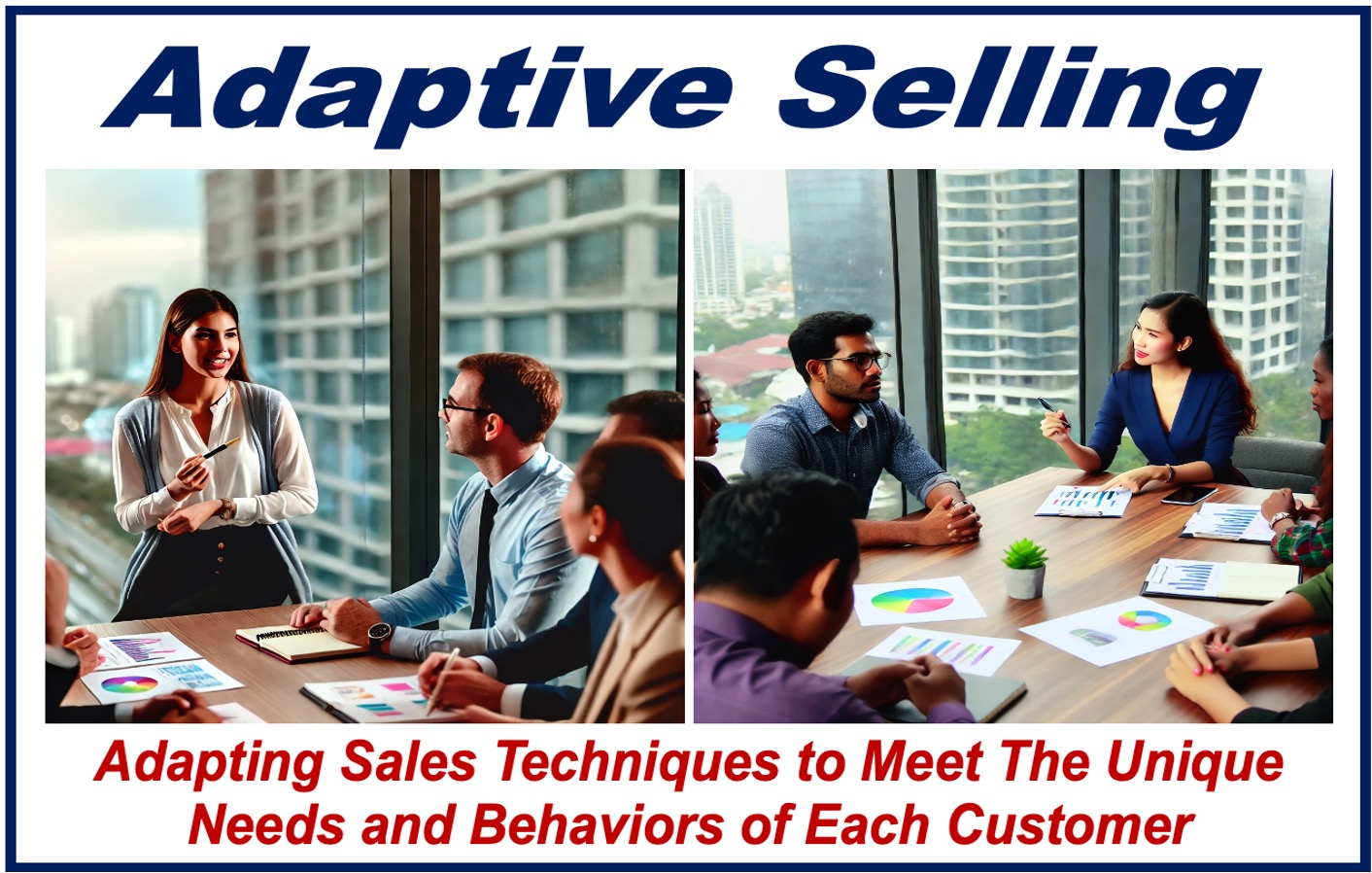Adaptive selling involves adjusting selling techniques and strategies to match the unique needs and behaviors of each customer or prospect.
This sales method contrasts with the traditional one-size-fits-all approach. Your sales strategy recognizes that every customer or prospect is different and requires a personalized approach.
The term “adaptive selling” has existed since the late 1970s. It was significantly developed and popularized by Professors Barton A. Weitz, Harish Sujan, and Mita Sujan in their influential paper “Knowledge, Motivation, and Adaptive Behavior: A Framework for Improving Selling Effectiveness,” published in 1986 (citation below).
Example of Adaptive Selling
Let’s look at a simple example of adaptive selling:
Let’s imagine that you work at a shoe shop. Not every customer wants the same thing, so you have to adjust your sales approach based on the various different customers that walk into your shop.
The first customer of the day walks in and begins asking detailed, highly technical questions about shoe cushioning, arch support, and running efficiency. As this customer is data-driven, your sales approach would involve highlighting technical details, materials used, and comparisons between models. They leave the shop with a new pair of shoes that matched their needs.
Another customer walks into the shop shortly after. However, this customer’s request is much less data-driven. “I just need something comfortable for walking around,” they say. Because the customer is looking for comfort, your sales approach changes (compared to the data-driven customer) and instead you focus on comfort, ease of use, and stylish options (not so heavy on technical specs).
By adapting your sales pitch based on the customer’s behavior and preferences, you have adopted an adaptive selling approach.
Key Components of Adaptive Selling
Understanding Customer Needs: Your first step in adaptive selling is to understand your customer’s needs, preferences, and pain points (specific issues or problems that customers are experiencing). This involves active listening and asking the right questions.
Flexibility in Approach: You must be flexible in your approach, willing to change your strategy based on your customer’s responses and behavior.
Building Rapport: Establishing a connection with the customer is important. Find common ground and showing genuine interest in their situation.
Tailored Communication: Adjust your message to fit the customer’s language, tone, and level of understanding.

Steps to Implement Adaptive Selling
Research and Preparation: If you can prepare before meeting with a customer, gather as much information as possible. Find out all you can about their specific needs.
Active Listening: During your conversation with your customer, focus more on listening than talking. Pay attention to verbal and non-verbal cues to gauge their needs and preferences.
Ask Open-Ended Questions: Try to avoid Yes/No questions, which will not get the customer talking. Open ended questions are more likely to encourage them to talk about their needs, pain points, and aims.
Adapt Your Pitch: Based on the information gathered, adapt your sales pitch to address the specific needs and pain points of your customer. Highlight how your product or service can solve their problems.
Provide Solutions: Offer tailored solutions that fit your customer’s needs. Be ready to adjust your offer based on their feedback.
Follow-Up: After the initial meeting, follow up with the customer. Address any additional questions or concerns they may have and continue to provide value. Do not underestimate the importance of follow-up.
Benefits of Adaptive Selling
Customer-Centric Approach: By focusing on the individual needs of the customer, you can build stronger relationships. This can lead to higher customer satisfaction and brand loyalty.
Potentially Greater Sales Volumes: When you tailor your sales techniques to the wants, needs, and circumstances of the customer, you are more likely to close a sale. With personalized interactions, your customers feel valued and understood.
Competitive Advantage: As an adaptive seller, you stand out from your competitors. You are seen as more responsive and attentive to customers’ needs.
Improved Customer Relationships: By showing that you understand and care about the customer’s needs, you build trust and loyalty. Customer loyalty is invaluable for business success and expansion, as loyal customers are more likely to make repeat purchases and recommend your business to others.
Higher Conversion Rates: Personalized sales approaches are more likely to result in successful sales. The term “conversion rates” refers to how many customer visits or presentations result in a sale. For example, if you make 20 customer visits and achieve 5 sales, your conversion rate is 25% or one-in-four.
Enhanced Reputation: Customer-centric approaches are great for brand image. If your company gains a positive reputation, it will attract more customers.
Citation:
Weitz, B. A., Sujan, H., & Sujan, M. (1986). Knowledge, Motivation, and Adaptive Behavior: A Framework for Improving Selling Effectiveness. Journal of Marketing, 50(4), 174-191. https://doi.org/10.1177/002224298605000404
